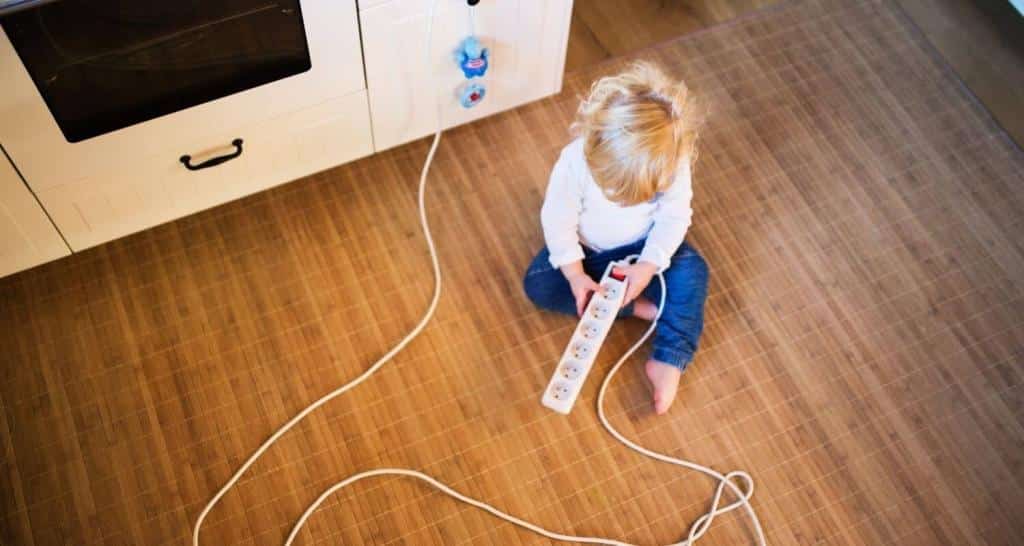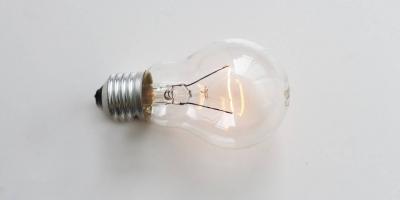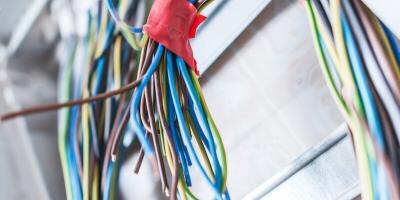Our home is supposed to be where we all feel safe and protected.
But every year, emergency units deal with a significant number of domestic injuries. That’s because safety hazards present in our homes lead to serious accidents e.g. falls, drowning, electrocution, burns & scalds. Sadly, our children often fall victim to these unintentional accidents.
Let us bear in our minds that children are the most curious creatures. Their curiosity often leads them to sticky situations and places they’re not allowed. At their tender age, these young minds are drawn to things they’re not supposed to be doing. And one of these menacing behaviours is sticking their fingers into the power outlet.
This incident does not come as a surprise since outlets are low to the ground becoming accessible for babies and toddlers to reach. Our home is the most common place where childhood accidents take place. Moreover, these accidents, especially electrical problems can be prevented with simple precautionary measures.
While it’s easier to simply buy a pack of outlet plugs to child-proof your home, there are a couple of crucial details that you need to know.

The Dangers of Power Outlets to Your Child
The human body is a good conductor of electricity, that’s why electric current travels easily through it. So, when an electric current passes through a child’s vulnerable body, the discomfort can range from short-term to permanent organ damage.
According to the Australian Institute of Health and Welfare (AIHW), the most frequently reported cause of domestic electrocution (73%) is having contact with cords and switches or electric current. And mobile babies or toddlers get electrocuted by chewing off the electrical cords or poking metal objects into the power outlet.
Furthermore, the extent of the injuries will depend on the electrical source’s voltage and how long it lasts. Therefore, when your child is exposed for a longer period, seek medical care attention immediately. Chances are that there could be serious damage.
Serious electric current damage ranges from the following:
- Internal damage – that includes heart, kidneys, brains
- External and internal burns – muscles, tissues, nerves, bones
- Cardiac arrest – electric current interferes with the heart
- Injuries from falls happen after having in contact with electricity
Here are less serious electrical shock effects your child may experience including:
- Seizures
- Headache
- Muscle contractions
- Weakness accompanied by discomfort due to pain
- Numbness of the body or tingling
Learning what electrical hazards are present around your home, will help in preventing electrical accidents from happening.
While there are three (3) types of electrical hazards present in and out of our residence; we are more compelled to discuss the electric shock. That’s because we want every parent to be fully aware of what to do in this certain situation.
Electric Shock: Causes and Symptoms
Electric shock occurs when the body comes into contact with an electric current such as conductors in a circuit, touching a live wire or electrical ground. There are four elements to help you identify the severity of the electric shock.
- Amount of current
- How long the child has been exposed to the electric current
- The path of the current to the victim’s body
- The frequency of the current
If these elements combine in one scenario, chances are the shock that the child has received can be severe. Electric shock can be life-threatening. But, the severity of the shock is dependent on the amount, the strength of the current and the length of exposure.
In some cases, the child may seem unhurt with no obvious complications. But, it’s best to get the child treated for proper physical assessment. That’s because some injuries will not show right away. Here are some shock injuries a child may obtain:
- Burns to the skin
- Burns to internal tissues
- Electrical interference to the heart that may result in cardiac arrest
In case the electric shock left the child unconscious, having difficulty breathing with a slow or fast heartbeat, call for medical help on triple zero (000).
Warning! Before you rescue the child, disconnect the power supply. That’s because the victim becomes the conductor of electricity unless the source is turned off.
So, do not put yourself in danger, always give precedence to your safety. Then, go ahead with caution.
Causes of Electric Shock
Besides our power outlet, these are the most common causes of electric shock present in our homes, including:
- Faulty appliances
- Frayed or damaged extension cords or leads
- Deteriorated household electrical wiring
- Appliances coming in contact with water
Symptoms of Electric Shock
Electric shock victims may experience the following symptoms, including:
- Difficulty in breathing or no breathing at all
- Unconscious or loss of consciousness
- Weak and erratic pulse or no pulse at all
- Visible burns particularly where the current entered and exited the body
- Sudden onset of cardiac arrest
What to Do When Your Child is Electrocuted
As stated earlier, when you’re going to rescue the child, give precedence to your safety. As a first responder, do not attempt to pull the child unless the source is turned off completely. Again, make sure to disconnect the power supply so you don’t become a victim yourself.
After cutting off the power supply, assess the situation. Check for the child’s response and breathing. If the child is unconscious, call for medical help by calling triple zero (000). While waiting for the ambulance to arrive; whether the child is conscious or unconscious, do the following safety measures:
- If it’s necessary to start CPR, then do so with due precedence. Check the link to properly perform CPR on babies and children over 1-year-old.
- If you’re not sure about performing resuscitation, keep your line open because the call-taker will give you easy-to-follow instructions.
- If the child is conscious and CPR is not necessary, attend to the child’s injuries. This can be done by placing the burn under cool running water for up to 20 minutes.
- Avoid dressings that will stick to the burn. If there’s a cling wrap available, you may use it to cover the burn. Make sure the cover is not applied tightly.
- Talk calmly and reassuring to the child.
Moreover, if you choose not to call for an ambulance, get your child checked to the nearest emergency for proper assessment. We mentioned earlier that chances are the current may cause internal damage.
8-Must Child Safety Measures from Electrical Hazards
The most effective solution to prevent electrical injuries is to promote child safety at home. In our adult-friendly home, various safety hazards may potentially cause harm to a child. But on the brighter side of things, we can keep our children safe by finding out these risks.
While we remove these potential hazards, we should also be responsible for supervising our children from time to time. So, from the moment you and your partner are planning on having a child, you should also start child-proofing your entire house, here’s how:
1. Install GFCIs
In every home, there are rooms with water sources such as bathrooms and kitchens. And installing GFCIs around your house will not only protect your child but including the adult members of the family as well. GFCIs are designed to automatically shut off in situations where there’s a presence of current leaking from the circuit. In short, it keeps us safe from high voltage shocks.
2. Do not use extension cords
Babies may chew off the cord while toddlers get tangled while running around the house and may knock over the appliances. Or worse, the child may poke a metal object into the socket. These are the possibilities when you opt to use an extension cord. Therefore, as much as possible, avoid using extension cords and even placing power strips in your kid’s room.
3. Purchase electrical outlet caps
Electrical outlet caps are the cheapest way to keep your child from the dangers of electrical shock. Bear in mind that a child’s inquisitiveness can muster the courage into sticking its finger. With the help of these plastic electrical caps, you will be able to minimise the risk of a child getting electrocuted.
4. Do not forget to unplug your appliances
Always make it a habit to unplug and turn off your appliances at home before going to bed at night. Children often wake up earlier than most adults. Just for when your child decides to play while you’re asleep, you’re able to minimise the risk by unplugging your appliances.
5. Replace your faulty appliances
If your appliances feel hot to the touch, call a reliable professional electrician for a proper assessment. It’s likely possible that your child can get their hands into one of these faulty appliances and may injure themselves in the process.
6. Routine electrical maintenance check
As a parent and despite our tight schedule at work, we must make sure our home is safe for our children. By doing this, you should do a routine electrical maintenance check by removing loose and frayed wires accessible to your child’s reach.
If you’re not confident to carry out this task, call for electrical support. At least once a year, hire an electrician to get the loose wires fixed and fastened to their proper places. You can find local electrical contractors in all areas of Sydney – whether that be us and another reliable contractor!
7. Pinpoint and identify possible electrical hazards
Rule of thumb; look down at your child’s level. Inspect every room or area around your house and find any potential electrical hazards. Make sure to check the following areas, including:
- Power points
- Light switches
- Behind the furniture or fixtures
- Dressers
- Countertops
- Desks and side tables
8. Educate older children
If your child can have a good grasp or is old enough to understand the dangers of playing with electrical wiring, talk to them. Educate your kids about the hazard of overloading the outlets or extension cord. Furthermore, make sure your kids will unplug any unnecessary devices before going to sleep.
Here are some extra quick safety tips that can help reduce the risk of electrocution:
- Hire a licensed electrician to install your wiring and safety switches around your home
- Throw away your frayed and damaged cords properly
- Remind your kids and even adults to pull the plug instead of pulling the cord
- Keep your appliances away from wet areas
Guide to Child Proofing Your Power Outlets
We have already established that kids are highly inquisitive which often leads them to places they’re not supposed to. However, electrical products form a major part of our routine. As a parent, your main goal is to keep your baby safe from the hazards of electrocution and electric shock.
That’s because our electrical goods, appliances and equipment are not designed for our children’s safety. Moreover, we have here our top licensed electrician guide in baby-proofing your home.
Check your regular receptacle outlets
Our kids like to poke their fingers or force small objects into the outlets. That’s why you need to check and replace your electrical receptacles accordingly. If you take a closer look at a regular receptacle outlet, you will notice how accessible the holes are.
Tamper-resistant receptacle
A tamper-proof receptacle eliminates the risk of small objects being forced into the electrical outlet. As you can notice, the tamper-resistant receptacle is filled in with plastic, these are spring-loaded shutters. These shutters will help prevent any object inserted directly into the power outlet.
Moreover, you have to keep the electrical plug out of sight since it tamper-proof can be opened simultaneously such as the plug.
Cover with plastic electrical caps
The simplest and inexpensive way of baby-proofing your power outlets is to buy a box of electrical outlet caps. The object is made out of plastic that doesn’t have a grip when it’s plugged. This means that your toddler won’t be able to pull the device out.
So, it’s safe to say that this device is effective, especially for its affordability. However, the only downside about the electrical cover is that they need to be removed every time you need to use the outlet.
Sliding plate covers
This baby-proofing device has the same concept as the electrical outlet cap only slightly expensive. But what’s the catch is that it automatically snaps back when not in use which lives up to its purpose in securing the outlet. This device offers the safety and security that you’re looking for a baby-proofing device than the electrical caps.
Outlet covers
The outlet cover is virtually effective and impossible for a prying kid to force into. They may be easy to install and secures the power outlet effectively but there’s a downside to it. The device is a bit expensive especially if you need to baby-proof several outlets.
Power strip covers
The power strip cover is considered the best and easiest baby-proofing device. Despite its security features, the only downside about this device is that it’s designed to accommodate thick cables. The gap around the small cables makes it accessible for children to stick their fingers.
Baby-proofing long cables or extension cords
We mentioned earlier to avoid using extension cords. In case it’s necessary to use long cords around your home, make sure to have a trustee duct tape or gaffer tape on hand. This will help you secure any loose cords.
Keep in mind, that no matter how old our child is going to be, there will always be risks present inside our home. As a parent, your best response is to child-proof them.
The Bottom Line
Every household relies heavily on the efficiency of electrical goods, equipment or appliances. In short, we are dependent on electricity so we can move around and work without difficulty. Moreover, if you have kids running around the house, any object that comes into contact with electricity is a potential safety hazard, especially for babies. There are a bunch of home service providers that you can also use to ensure that your home is well-maintained, clean and child-friendly.
Even a sheer amount of electricity that will course through a child can cause harm to their vulnerable body. That’s why, as a parent, taking care of your children and ensuring their safety is one of your most important roles. Hence the reason why it’s highly encouraged to actively child-proof your home to keep your kids from the potential hazards of electrocution and electric shock.
It’s up to us–the adults to prevent these kinds of risks. It’s not a surprise when babies and toddlers like to touch things they’re not allowed to. If you’re not confident in child-proof your home, entrusting this important task to a reliable and licensed electrician is a must.
Your Trusted Emergency Electrician in Sydney
Gordon Powers is a reliable team of dedicated professional Level 2 Electricians in Sydney. Our Electricians are trained to provide every resident in Sydney with stellar electrical services and efficient solutions.
We provide services to different sectors in Sydney from the residential, commercial establishment and industrial facilities. Our repeat and satisfied customers are a prime example of our reliable services.
With our time-tested electrical solutions, we guarantee premium quality electrical services that go beyond what you expected from us. Depending on your needs, our team of Level 2 Electricians will deliver outstanding services. We also have 24/7 Emergency Electricians in Sydney.
Contact us anytime at 02 9199 7480 or you can also send in your enquiries here.










